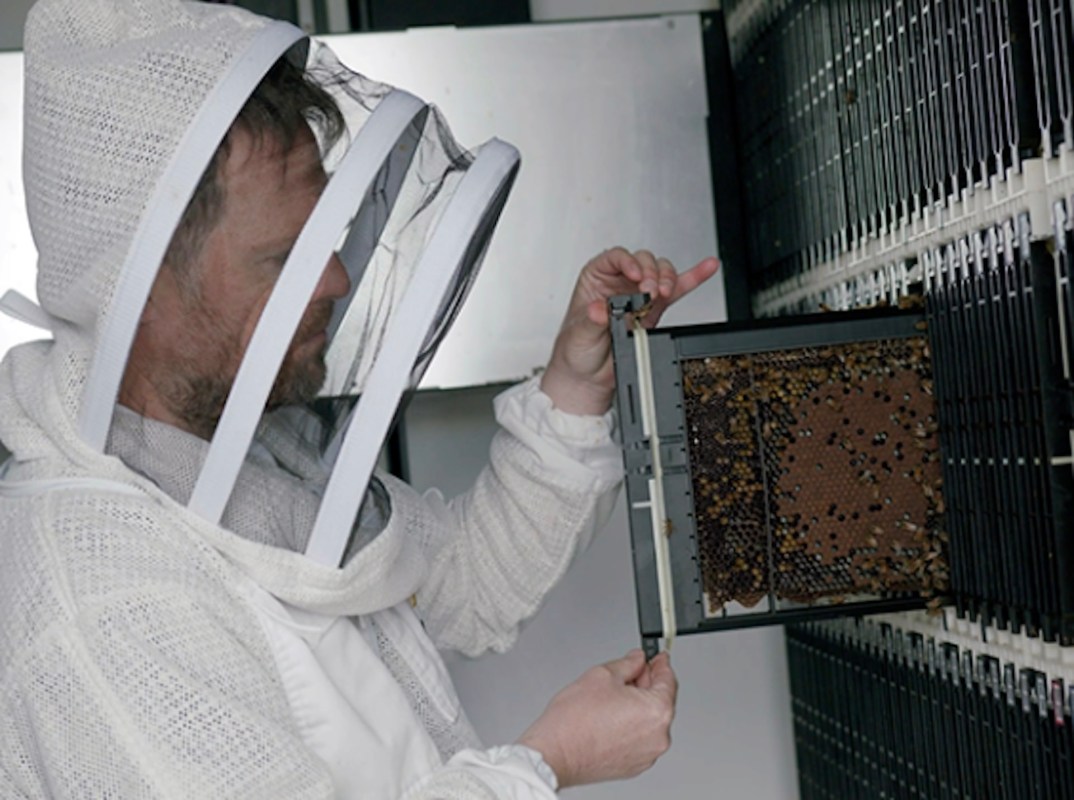The "Save the Bees" slogan has created quite a buzz, and in a recent development in the campaign, it appears robots may be coming to the rescue.
Beekeeping is thousands of years old and plays a critical role in agriculture, as more than 130 agricultural crops and one-third of the food we eat in the United States are pollinated by bees. However, Save the Bees reports that bee populations have decreased by more than 50% in the past 75 years, while human populations have increased by over 130%. The Associated Press further states that nearly half (48%) of the colonies in the U.S. collapsed last year.
The loss of bees puts the entire global food supply at risk, and because of this, the race is on to save them. As reported by Axios, an AI-powered robotic hive created by Beewise could help beekeepers save honeybee colonies.
The BeeHome looks like a large filing cabinet and has room for up to 10 colonies that build honeycombs across multiple frames, as shown by a video on the company's YouTube page. In its central corridor, it has "a robot that monitors the colonies 24/7 using computer vision, AI, and neural networks," as described by co-founder and CEO Saar Safra to WIPO Magazine.
The robot inspects the bees, then the AI tools convert the images to data. Analyzing this data allows any problems the bees might be experiencing to be identified, which then triggers the robot to address those issues.
If the AI detects mites, the robot moves the frames to a section of the box that heats each frame by 2 degrees — an amount hot enough to kill the mites but not the bees. If AI sees the bees are hungry, the robot fills a food frame and places it beside the frame filled with hungry bees; if it senses pesticides entering the hive, the robot can close the entrances; and if it sees that the bees are sick, the robot will provide medicine to the hive.
"We haven't changed traditional beekeeping in any way," Safra said. "We simply do it with a robot in real time."
Apiarist's Advocate points out that the AI technology allows beekeepers to reduce the number of hives needed to achieve the same pollination results, reducing their carbon footprint and resource consumption.
Others are also turning to robots in the face of mass bee die-offs, like researchers in Finland who have developed small, fairy-like robots that can fly, which could help pollinate vital crops across the globe.
Loss of bees is largely caused by human activity, with factors like rising temperatures, habitat loss, pesticides in agriculture and gardens, and disease all playing a role. We can give the bees a wing up by helping to slow Earth's rapid overheating by changing the way we buy and use plastic, get around, and power our homes.
We can also help by changing how we plan and care for our yards, making them havens for pollinators like bees instead of chemically treated wastelands.
Join our free newsletter for weekly updates on the coolest innovations improving our lives and saving our planet.









